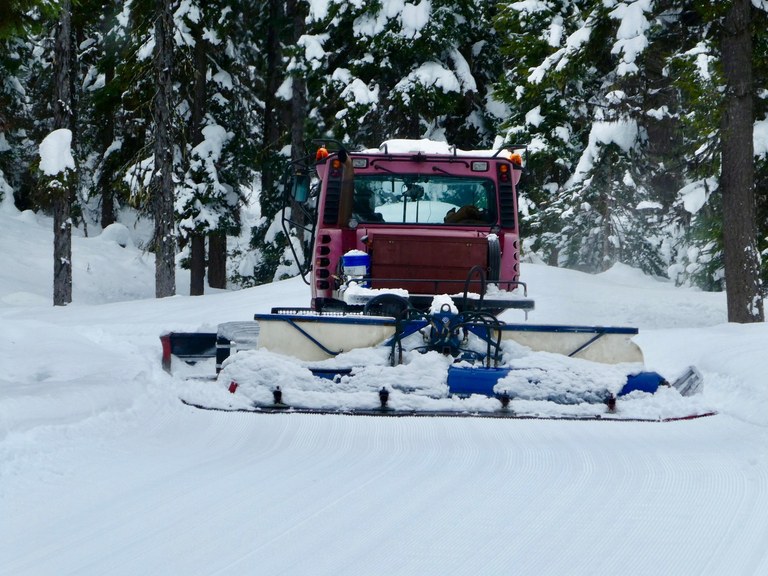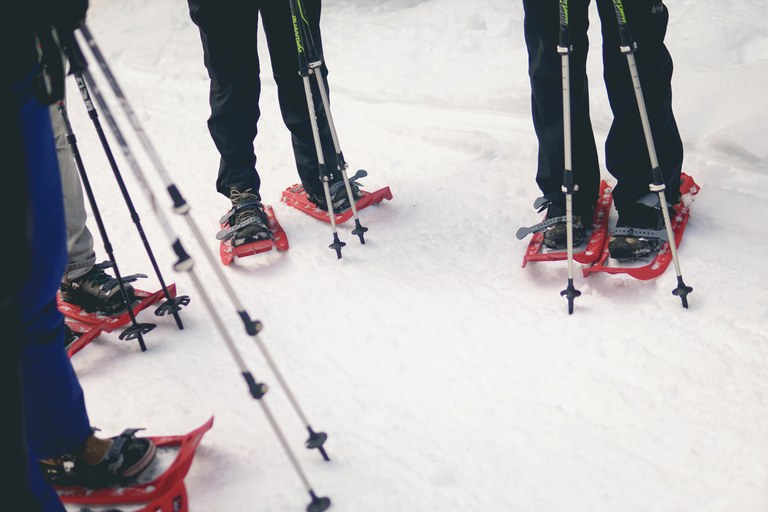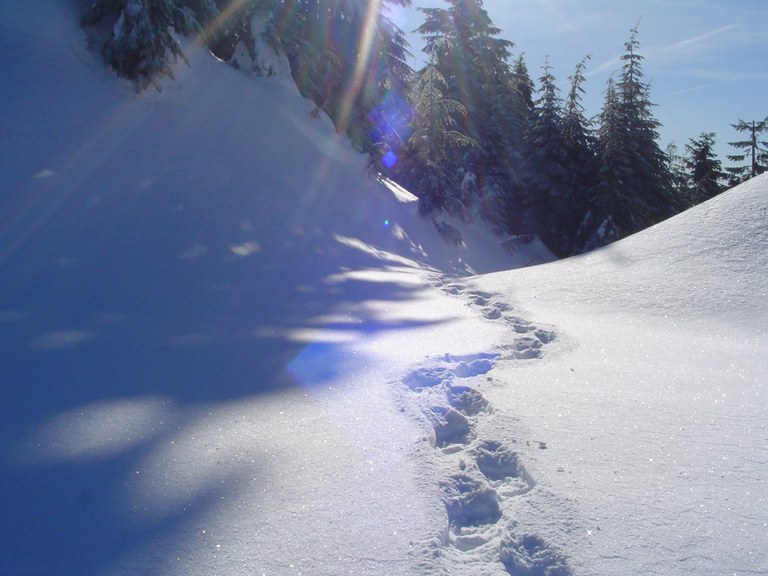How to Visit a Sno-Park
The snow is falling in the mountains and your go-to summer trails are now inaccessible, but you still want to get out there and explore. Time to try a Sno-Park!
These state-managed recreation areas offer some of the most accessible and safe winter recreation opportunities across Washington, and chances are there’s one near you. Go equipped with the right permit, knowledge of trail etiquette and the right winter safety gear, and you’ll have a great time exploring one of these winter wonderlands.
And anytime you head into the snow, always check the latest avalanche conditions and weather forecast.

A grooming machine at Pinegrass Ridge Sno-Park. Photo by Birdman.
What is a sno-park?
Simply put, Sno-Parks are parking lots that are cleared of snow during the winter. They provide convenient vehicle access to all kinds of winter recreation opportunities across Washington — everything from snowshoeing, Nordic skiing, sledding, snowmobiling and even dogsledding depending on the specific park.
Sno-Park parking lots are managed by Washington State Parks, but the trails leading from them often cross between state and federal land and are managed by various land managers.
What’s the difference between a motorized and non-motorized sno-park?
Non-motorized Sno-Parks do not allow snowmobiles, while motorized Sno-Parks allow snowmobiles plus non-motorized activities like snowshoeing or cross-country skiing.
Each trail system is different, but expect to share your route with snowmobiles if you choose to snowshoe at a motorized Sno-Park, and follow trail etiquette by snowshoeing or skiing on the right hand edge of groomed snowmobile trails, never on the groomed surface.

Many Sno-Parks offer great snowshoeing opportunities. Knowing the difference between motorized and non-motorized Sno-Parks will help you plan a trip that's right for you. Photos from WTA Archive.
Which sno-park permit do I need?
There are three types of permits available for Sno-Parks. Learn which permit is right for you below, then purchase your permit online starting November 1. The revenue from permits pays for parking lot plowing, trail grooming, education and ongoing maintenance of this program.
- ONE-DAY PERMIT: $25 per day. Valid at all Sno-Parks including special groomed trails until midnight on the day purchased.
- SEASONAL PERMIT: $50 per season. Seasonal permits are valid at all non-groomed Sno-Park locations. For groomed trail locations you'll need this pass plus the special groomed trails permit (below). If you know you'll be going out two or more times in a season it's a better deal to buy this permit.
- SPECIAL GROOMED TRAILS PERMIT: $70 add-on per season. Certain Sno-Parks are designated as having special groomed trails, maintained specifically for cross-country skiing. For annual access to these areas you need both a seasonal permit (above) and this add-on permit. The special groomed trail locations are Cabin Creek, Chiwawa, Crystal Springs, Hyak, Lake Easton, Lake Wenatchee, Mount Spokane and Nason Ridge where trails are groomed for cross-country skiers.
Where are sno-parks?
Sno-Parks can be found in all the snowy parts of Washington. Washington State Parks has a complete list of motorized and non-motorized Sno-Parks you can browse, or just search "sno-park" in our Hiking Guide.

Snowshoers should always stay off groomed surfaces to avoid damaging them for other users. Photo by Jason Hanson.
What is the etiquette at sno-parks?
Sno-Parks are open to many different user groups and various types of trails exist for these different groups. Knowing where to snowshoe or ski without damaging groomed trails is an important bit of winter know-how.
Groomed vs. non-groomed trails
Groomed trails are corridors in the snow that have been smoothed over by machines for a specific type of travel — either Nordic skiing or snowmobiling. Groomed trails look like flat, smooth snowy roads. If the trail is intended for Nordic skiing, the machine also cuts two parallel grooves in the snow where the skis go. Hikers and snowshoers should stay off of these groomed trails to avoid creating holes or other irregularities in the snow that will trip up other users. That doesn’t mean you can’t travel along these corridors, just do so on the ungroomed snow on the right hand side of the trail.
Skiers
Skiers should slow down when passing snowshoers and announce their presence.
Yielding
Skiers and snowshoers should yield to snowmobiles and dogsled teams.
Can I bring my dog?
Dogs are not allowed on groomed portions of trails or at Hyak Sno-park. Check the rules for the specific Sno-Park you plan to visit to check if dogs are allowed. If dogs are allowed, it's a good idea to keep them leashed.
When do sno-parks open?
Sno-Parks operate between November 1 and April 30, depending on snow presence, and all visitors must have a permit to park at a Sno-Park if they visit during that time.

